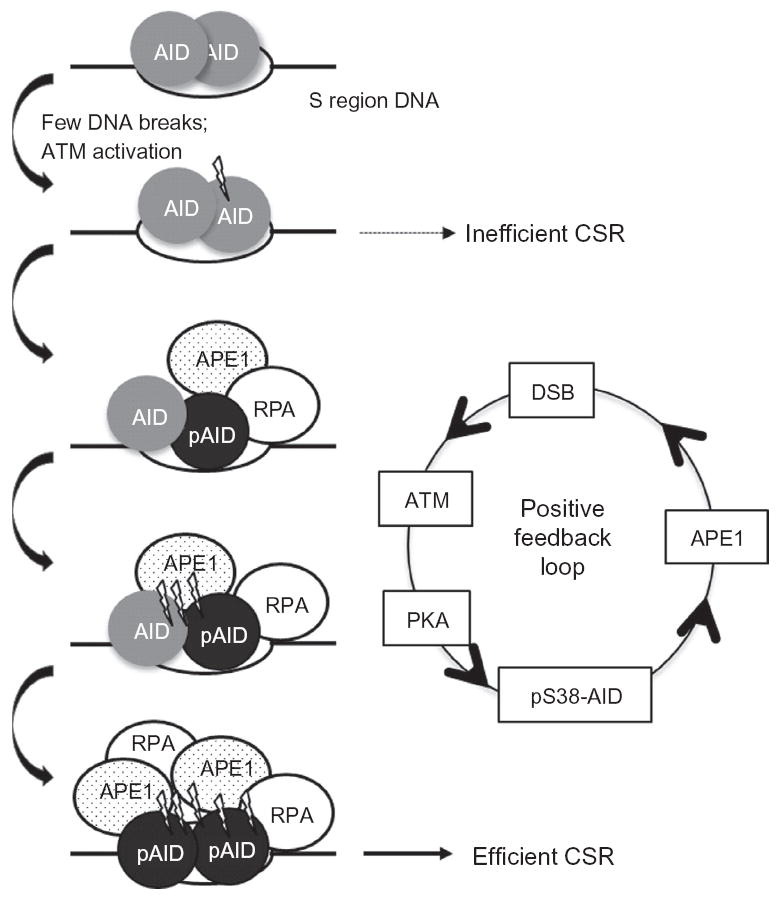Figure 1.6.

Phosphorylation and DSB-dependent positive feedback loop amplifies DSB formation. Multiple AID molecules are assembled at S region DNA. An initial DNA break due to AID-mediated DNA deamination of cytidines is generated and can result in inefficient CSR. ATM-dependent S38 phosphorylation of AID induces the recruitment of APE1, which increases the number of DNA breaks generated. This induces additional phosphorylation of AID at S38 and APE1 recruitment to generate the high density of DSBs required for efficient CSR. AID phosphorylation at S38 also allows for interaction with RPA, which promotes efficient CSR potentially by recruiting downstream repair factors.
